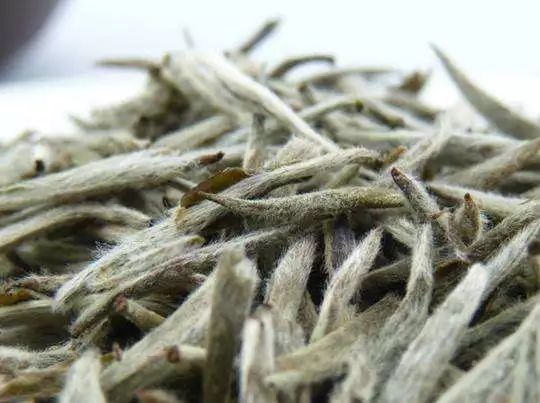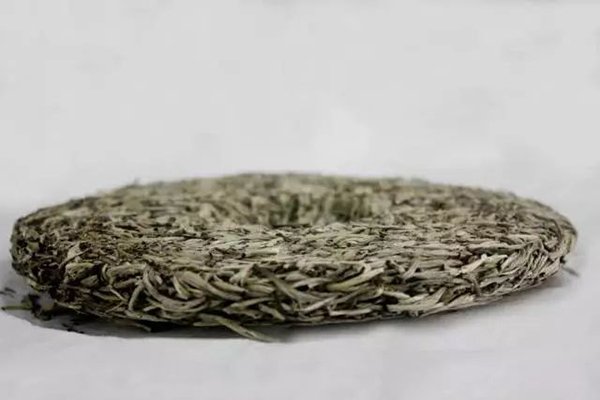Last Updated on 12/15/2020 by Desmond
White tea has the lowest processed in all the true tea types, most made from the tenderest buds; That makes it very rare and costly. But some people bought a package of white tea and found that the leaves are full of tiny white fuzz. Are they went mold? The answer is NO. Instead, it is a symbol of high quality.
CONTENT
What Is The Fuzz On White Tea Leaves?
First, they are absolutely not molds. These fuzz are nature growth on the leaves, and a professional saying is “Tea Hao.” Even though the pronounce is close to “Pekoe,” which refers to the black tea grade, they are not in the same meaning.
The part near to the tender, the more the fuzz grows (primary on the back.) The fuzz can help against UV damage to the buds and prevent the little bugs from biting them. Under the sun, the white fuzz will reflect silver light and make a unique look.
Merchants usually use some intuitive words to describe the tea aroma, such as honey, rice, floral, or fruity. In the white tea case, most people prefer to describe the flavor with “Hao aroma.” And this Hao aroma is primarily coming from the tiny fuzz on leaves.
The fuzz got gland cells itself, producing aromatic substances and containing more free amino acids than leaves. Among these substances, glutamic brings a lightly sour, aspartic acid, Ser and Ala bring a soft roasting scent. Some crude fiber gives the wood smell. Under the mixture of various aromatic and flavor substances, white tea got the unique Hao aroma. Due to the components being close to MSG, you can understand the Hao aroma as a kind of umami.
To maximize extracting and retaining this umami and white tea nutrition, the recommended brewing water temperature is typically under 85℃. And be gentle when adding water, don’t let the intense flow crash down the fuzz; although it is inevitable most of the time. By the way, these fuzz are safe to eat.

Why Only White Tea Got Fuzz?
In fact, all the tea leaves naturally with fuzz; why we only see them on the white tea? One is because of the different types of tea trees, and the other reason is the processing method.
White tea primary is made from two tea tree types, Fuding Da Bai and Yunnan Large-leaf tea tree. Fuding Da Bai got more fuzz on its leaves and buds than other types of tea plants. And Yunnan Large-leaf tea trees except for producing Pu-erh also produces a kind of controversial white tea – Moonlight White Tea(Here to know more about it.) The leaf’s back is full of white fuzz and covers the natural color, making moonlight white tea get an exceptional black-white color looks.
The natural fuzz will fall off gradually by the leaves’ growth. So the spring tea will get more fuzz than the summer and autumn ones. Among white tea, Silver Needle usually gets the most, White Peony is second, and Shou Mei gets less.
The processing is the primary factor that affects how much fuzz can be retained.
Other teas have been more complicated processing, so less fuzz retain on their leaves. Especially the fixation process, string under a high temperature make the fuzz almost gone. And white tea got the simplest processing, only withering and drying, even without rolling, so almost all the fuzz are retained.
High-grade tea such as Yunnan Dianhong and Bi Luo Chun, even though they are not white tea, still retain many fuzzes because of the unique and elaborate processing. In the black tea case, due to the deep fermenting, the tea polyphenol changed, the theaflavin and thearubigins growing make the fuzz golden. So most high-grade black tea like Jin Jun Mei, the leaves are full of golden fuzz.

Tea Hao Amount Helps Judge The Tea Quality
White tea is famous for its tender buds and low processing(except for aged white tea.) Typically, most Chinese teas are grading according to the fresh degree of leaves. The more fuzz it got, means the more high-quality the product.

But due to every tea got unique flavor and processing, judging the quality only according to the fuzz amount seems not reasonable.
For example, if less fuzz on the Silver Needle tea leaves, that means it is not good; and to Shou Mei, its picking standard makes it get less fuzz, and you can’t say the tea is not good.
Besides, when brewing white tea with many fuzzes, the first to third brews may look muddy, and the followings will become clear. But if the infusions are muddy all the time, you should check whether the leaves are really molded. A simple judgment method is that the molds are small white spots and easily distinguished from the fuzz.
Hurrah! After all I got a web site from where I be able to actually take useful data regarding my study and knowledge.
Good article. I definitely appreciate this website.
Stick with it!